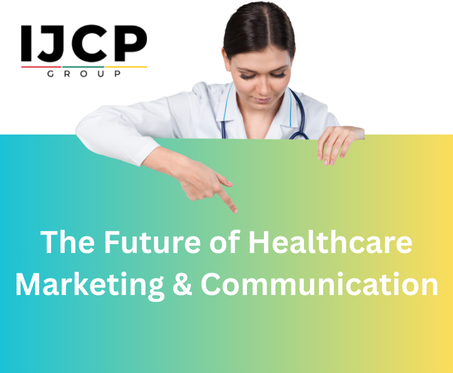
In today’s digital-first world, healthcare marketing and communication have become more than just promotional tools—they are essential strategies for building trust, improving patient engagement, and delivering measurable outcomes. The healthcare industry is evolving rapidly, influenced by technology, patient behavior, and regulatory landscapes. To stay competitive, hospitals, clinics, and healthcare brands must adapt to the latest trends that are redefining how they connect with their audiences.
Below, we explore the current trends in healthcare marketing and communication that every healthcare organization should focus on in 2025 and beyond.
Patients today expect healthcare providers to be accessible online, not just in person. From virtual consultations to mobile apps, digital touchpoints have become the norm. Healthcare digital marketing plays a critical role in ensuring that providers remain visible across search engines, social platforms, and industry directories.
Many hospitals are now using healthcare SEO strategies to increase visibility, ensuring that patients find them when searching for treatments, specialists, or preventive care advice. At the same time, healthcare organizations are investing in social media marketing for healthcare to share valuable health updates, build communities, and create two-way communication channels with patients.
Generic content is no longer effective. Patients expect communication that speaks directly to their needs. This is where healthcare content marketing makes a difference. By delivering blogs, videos, and newsletters tailored to specific patient groups, healthcare organizations can create stronger connections.
For instance, a cancer care center may use medical writing services to create educational content for patients undergoing chemotherapy, while a pediatric clinic may develop engaging articles for parents seeking vaccination guidance. Personalization not only builds trust but also increases patient satisfaction and loyalty.
The pandemic accelerated the adoption of telemedicine, and it continues to thrive today. As more patients choose virtual consultations, healthcare providers must adapt their healthcare communication strategies to highlight these services effectively.
Digital platforms, combined with healthcare branding strategies, help providers position themselves as innovative and patient-friendly. Marketing efforts must emphasize ease of access, data security, and personalized care—key factors influencing patient decisions.
Just as lifestyle brands collaborate with influencers, the healthcare sector is embracing KOL (Key Opinion Leader) outreach. Doctors, researchers, and industry experts play an influential role in shaping patient perceptions.
Healthcare organizations are increasingly partnering with healthcare communication agencies to manage PR campaigns that involve respected medical professionals. By using thought leadership and expert-driven content, providers can enhance their reputation and credibility in the industry.
Video has emerged as one of the most effective tools in digital healthcare marketing. Patients prefer watching short, informative videos over reading lengthy brochures. Whether it’s a hospital walkthrough, a doctor explaining treatment procedures, or testimonials from patients, video builds transparency and trust.
In addition, healthcare social media campaigns that use reels, short clips, and live Q&A sessions are seeing higher engagement rates than static posts. This makes visual storytelling a core element of modern healthcare communication.
The future of healthcare marketing strategies lies in data. With the help of AI and analytics, providers can now track patient behavior, predict health needs, and measure campaign performance more effectively.
From SEO for healthcare websites to tracking ad conversions and email engagement, data allows marketers to refine strategies and deliver better ROI. This also ensures that healthcare providers stay compliant while still delivering personalized outreach.
Trust is the backbone of the healthcare industry. Patients need assurance that the information they receive is accurate, ethical, and beneficial to their health. Healthcare communication services must prioritize transparency, ensuring that marketing campaigns never compromise patient privacy or spread misinformation.
Healthcare organizations must comply with industry regulations, while healthcare public relations campaigns should focus on credibility and long-term reputation building.
Patients interact with healthcare providers across multiple channels—websites, social media, emails, and even offline events. Therefore, having an omnichannel healthcare marketing strategy is essential. By integrating communication across all platforms, providers can deliver a seamless and consistent experience.
This is where a healthcare digital branding agency adds value by designing unified strategies that reflect professionalism, trust, and innovation.
The healthcare industry is entering a new era where marketing and communication are not just supportive functions but central to patient engagement and institutional growth. From digital healthcare marketing to KOL outreach, the trends shaping this sector emphasize personalization, transparency, and technology-driven engagement.Healthcare organizations that embrace these changes will not only strengthen their brand but also improve patient care outcomes. At IJCP Group, we understand the importance of effective healthcare marketing and communication strategies and continue to support healthcare providers in achieving long-term success.